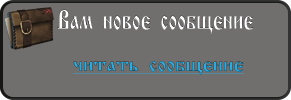... So there will also be some bit of War of Spanish succession.
"The Imperial Army in the age of Prince Eugene of Savoy 1690-1720"
Infantry
A1) Feld-Marschall Eugene Prinz von Savoy, 1704.
Sources: Blenheim Palace: painting of the Blenheim battle. Turin: Royal armoury.
The painter Laguerre, under the instructions of the Duke of Marlborough, rendered a series of paintings
relating to the battle of Blenheim-Höchstädt. In one of the paintings, the prince Eugene is depicted
as heading the cavalry charge on Lützingen village. Laguerre had the tendency of standardising all
the uniforms of the principal characters and many correct details such as the collar of the order of the
Golden Fleece and the gold-black sash, shows a good adherence to reality. The colourful coat denotes
the prince’s preference for rich and elaborate dress and the polished metal armour, in Lorraine fashion
style, underlines his French cultural origin. On one of the prince’s armour, there is an image of the
Madonna engraved on the breast. As Feld-Marschall the prince held the command staff, which was of
a simple design.
A2) General of cavalry Bernard Ludwig Herzog von Württemberg, 1704.
Sources: R.Knötel, Handbuch der Uniformkunde and Die Gross Uniformenkunde. Rastatt:
Wehrgeschichtliches Museum.
Between the end of the XVII and the beginning of the XVIII century anti-French feelings was diffused
throughout Germany and was also translated to the refusal by the German’s to adopt the pomp dress
fashions and styles of the French. The absence of decorations on the tunic of the duke meant that
the beautiful burnishing of the armour and the high quality manufacturing of the horse equipment
was highly visible and prominent. The adoption of a special red colour was characteristic of both the
imperial officers and the Württemberg house.
A3) General Kriegs-Comissär, late XVII cen.
Sources: T.Fuchs, Geschichte des europaischen Kriegswesens.
The pearl grey tunics were vastly diffused between both the officers and the soldiers in the army of the
emperor. This General-Comissar has added some quality features to his dress such as the plumes on his
hat and the red heels of his boots. The scarlet sash survived in the military style of the Austrian officers
up to end of the XVII century.
A4) General-assistant, late XVII, beginning XVIII cen.
Sources: Blenheim tapestry, building of Blenheim.
The clothing of the officers was not very different to that of the civilians. The sword does not even point
out his status, since in this era these types of weapons were also carried by every gentleman. Only the
sash with the imperial colours identifies this person as a military soldier.
Отредактировано Rhannon (23.07.17 15:31:22)


































































